Itty Bitty Kiddie tree
We are no longer building saddle trees, but we have two videos about how Western saddles fit horses available on our westernsaddlefit.com website.
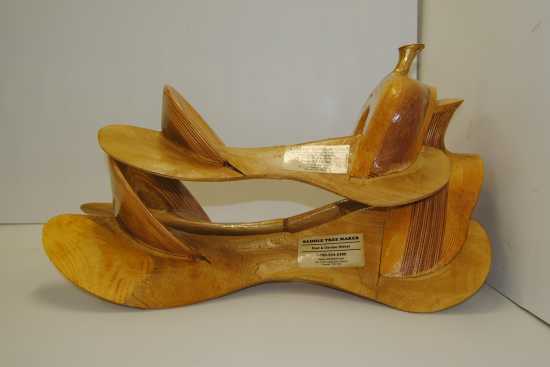
We have built a few kids’ trees over the years (primarily for saddle maker’s kids, interestingly enough), and quite a few half sized trees for display saddles, but this is the smallest riding tree we have built to date. Again, this is going to a saddle maker’s family. They are also a ranching family and grandma wants a saddle for the grandkids, who are still pretty little, but who will grow and will use the saddle on the ranch. They ordered the Wade in the picture too. It has a 15 ½” seat length, so you get a perspective of size here.
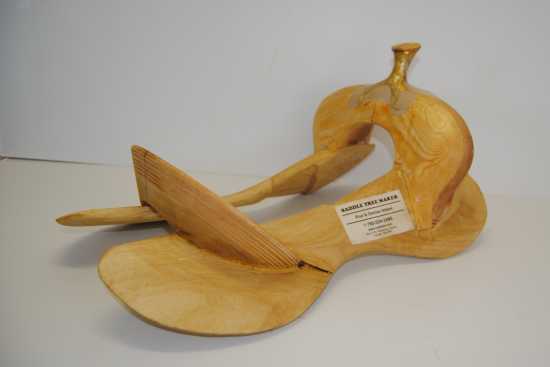
Basically, they wanted a scaled down version of a Modified Association tree, but it would still be used on smaller ranch horses, not just minis or ponies. The fork width is 11” wide, but we cut down the stock thickness to 3 ¼” from our normal 3 ¾”. Since it will be used on horses that have a decent wither, we couldn’t really lower the fork any more than we did. It is already lower than most swell forks we build. The horn is really small at 2 ½” high with a 1 ¾” cap, but it looks pretty proportional on this tree.
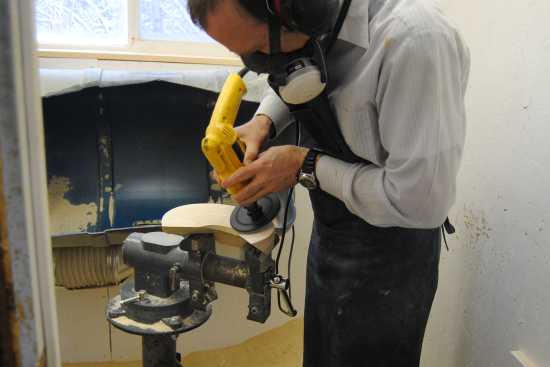
The cantle is 3” high by 10” wide, with an inch dish. We didn’t go as far down the bars with this cantle as we normally do because it is so narrow and small.
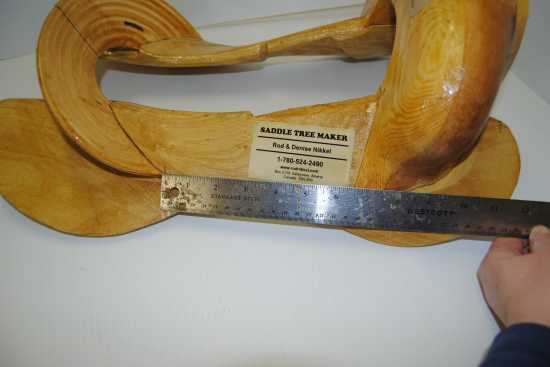
This made the measured thigh length a bit longer than we were thinking there would be. (None of our charts go this small so we extrapolated from what we knew. The rawhide will take up a bit more room than there is in the wood.) Little kids also tend to sit with their legs fairly well bent, which means they need more thigh room than someone sitting with their legs more vertical. As they grow, they will drop their legs straighter which will let the saddle last them for a few years. Most adults fit between 8 and 10 inches of thigh room - just for comparison's sake.
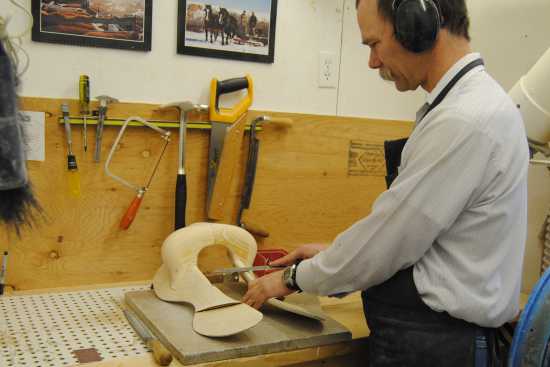
Rod also flattened the normal rise in the seat. We do this on request for people who want flatter seats, especially cutting type or calf roping trees. In this case, it makes sense because the seat is so short that the normal rise is comparatively way too much.
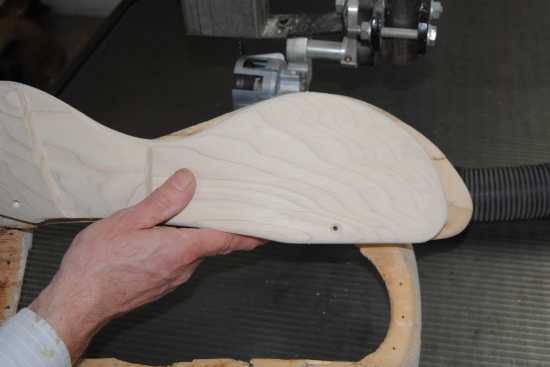
We also made the bars smaller, in both length and width. The distance behind the cantle cut on these bars is only 5”, a full inch shorter than normal. And we narrowed the bar depth a full inch all the way down. I was curious so we pulled down a tree we had duplicated a while back because it broke. It had no maker’s mark on it so we don’t know which company made the tree, but it looks very typical of what is generally in production saddles. When we compared bar width, our kids’ bar was the same width as the bar that came from an adult working saddle from a well known, top end production saddle, both at the back…
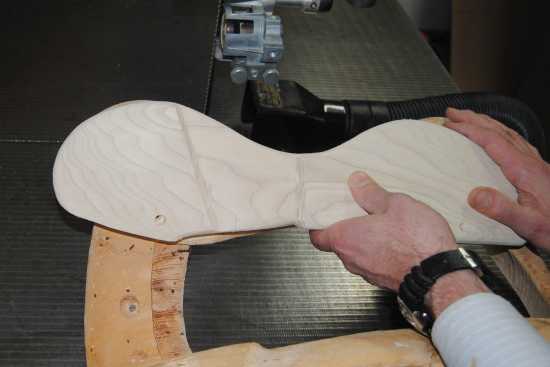
and the front. When we talk about saddle fit, the third principle is to distribute the Pressure over as much surface area as possible. This is a good illustration of how much surface area really is under most saddles out there.
The other effect the narrower bars had was to lower the gullet height and hand hole height measurements because they are measured from the table. If the bars were regular (not Wade) depth the gullet height on this tree would have been 7 ¾” and hand hole height would have been 6 1/8”. With the narrow bars, they measured at 7 1/8”and 5 3/8”. (They didn’t drop proportionally because the stock thickness was also less.) This really demonstrates the problems with trying to compare these measurements between trees with different bar patterns and between makers. To learn more about gullet height and hand hole height and all that affect them we have a whole webpage about it if you click here.
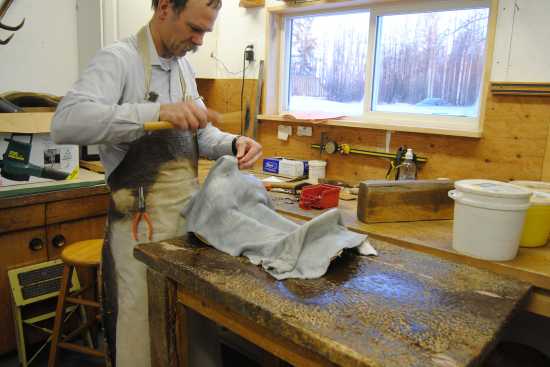
Rod also used a really light hide on this tree. To give you another perspective of size, this is how much room the itty bitty kiddie’s tree took up on the rawhiding table.
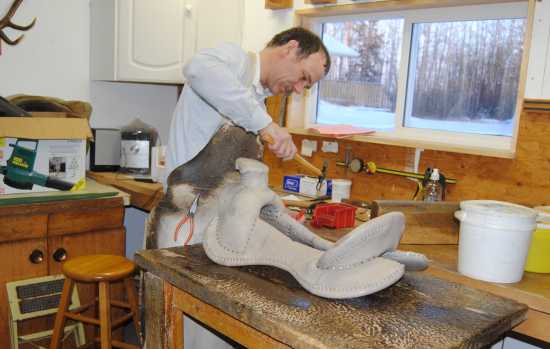
And here is the customer’s 15 ½” seat length Wade tree on the table.
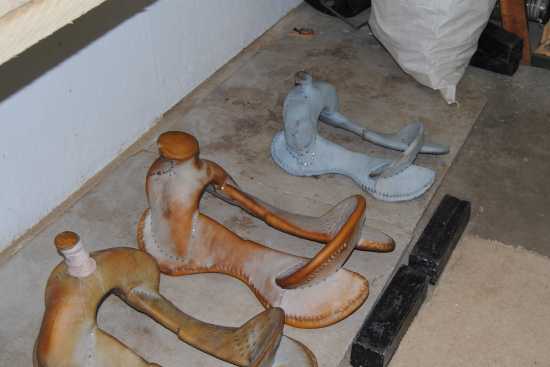
So now they are sitting on the flat surfaces drying. After the hides get to the point they won’t mark up, the weights will be placed on them to hold them square as they finish drying. It normally takes two weeks for a tree to dry, but the light weight hide on this one will dry faster. I'll try to remember to post pictures of it when it is finished.
